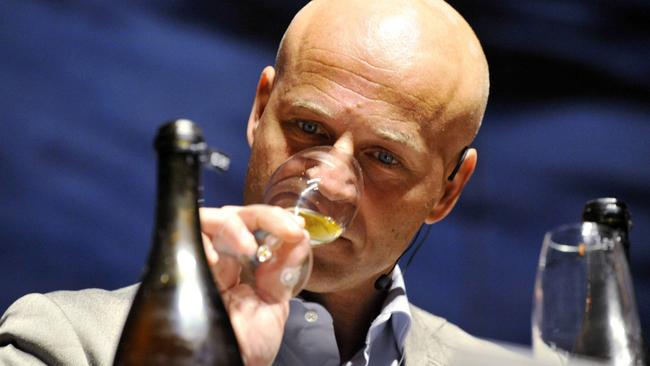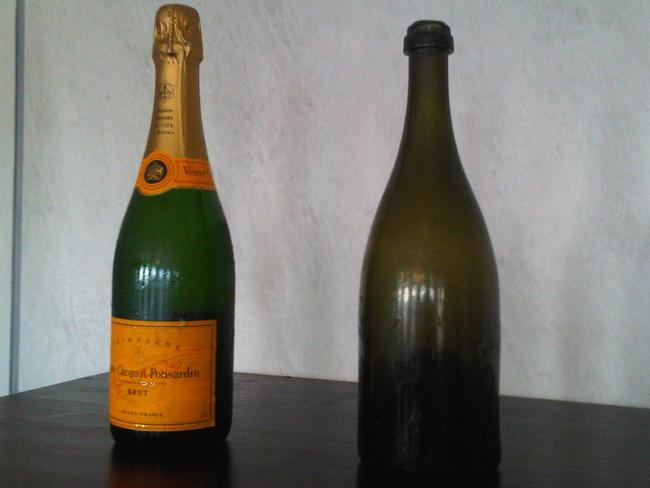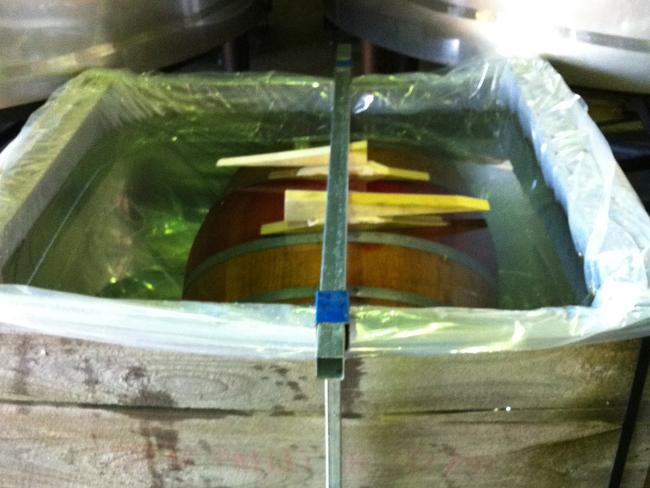Does the future of winemaking lie underwater?
A SURPRISE discovery of hundreds of bottles of champagne in a centuries old shipwreck has led to a surprising new winemaking technique.

Drinks
Don't miss out on the headlines from Drinks. Followed categories will be added to My News.
EVER since a treasure trove of 170-year-old Champagne was salvaged by divers from a shipwreck at the bottom of the Baltic Sea in 2010, change has been afoot in the world of wine.
A handful of winemakers from around the world have forgone land-ageing techniques and started experimenting with underwater wine ageing.
Among the 168 bottles of French bubbly that had aged in near perfect conditions, was Veuve Clicquot Ponsardin, a well-known brand founded in 1772 that still exists today. One of the four Veuves that were found sold for about $AU21,500.
Experts discovered that the historic “Baltic wine” version contained lower alcohol content and higher sugar levels compared to the modern Veuve Clicquot.

Consistent temperature levels, salinity, and low light and oxygen contributed to the results.
Greek winemaker Iannis Paraskevopoulos decided to give it a go, submerging his 2009 Thalassitis dry white the same year the historic bubbly was discovered. About four years later he dived 18 metres into the beautiful waters of the Aegean Sea near Santorini to rescue his 450 bottles.
Sadly, only three survived. Despite the losses, it passed the tasting test, sparking the obvious question — did it taste salty?
He instantly noted a distinct and disgusting aroma of old fishing nets. Fortunately, it was just the smell of the bottles. The one bottle he opened tasted awesome.
It didn’t take long for Australian winemaker Ben Portet to adopt the unique technique leading him to be the first and only in the country to release an underwater wine range.
Except he did it differently; rather than resorting to the whims of ocean and ageing individual bottles, he submerged entire barrels of wine in freshwater (via a rain water tank) held down by weights at his family-owned Yarra Valley winery, Dominique Portet.

It was to eliminate the possibility of salt entering the wine and simply because he didn’t have access to an underwater oasis like the others.
“With oak barrels, I wasn’t prepared to take the risk of salt entering the wine. If it is infused through the wood then to the wine you end up with a salty wine,” Mr Portet said.
Last year it was revealed it might be illegal to sell wine in the United States that has been aged in the sea due to “unsanitary conditions”. Mira Winery, a winery in Napa and the only American wine producer to experiment with underwater ageing, contested to this, saying their testing and inspection of the bottles showed there was no seepage and that the agencies never inspected the submerged bottles.
After dunking 600 bottles worth of his Ten Men Submerged Shiraz (after the second fermentation malolactic), Mr Portet literally didn’t touch the barrels for 12 months.
And just like the experts, he also found there to be less alcohol content in the wine.
“It was very fruit driven, which was the inverse to what I believed would occur,” Mr Portet said.
“I wouldn’t say I prefer this style over land ageing, but it’s definitely unique as there is very little oxygen ingress. Oxygen in excess can be very detrimental to wine quality, but I use it to my benefit during the ageing process.
“We will empty the (land) barrels to give it a breath of fresh air, but in the water, you have reduced oxygen levels so they are very different styles of ageing.”

The tenth-generation winemaker whose family’s winemaking roots date back to the early 1700s in France, said the biggest challenge was constantly keeping the water fresh from mould, having to put a filter in the water.
Despite that, he said it is definitely a lot more nurturing underwater and gives you completely different results, which is the exciting part.
And there isn’t much difference in price, just $8. The Ten Men Submerged Shiraz goes for $48 and the land-aged equivalent costs $40. Portet’s version has definitely slashed the consumer price compared to Mira Winery’s ocean-aged 2009 Cabernet Sauvignon selling for $500. This was prior to the federal agencies having caught wind of the small American boutique’s underwater ageing process.
Portet did this for a few years and released a 2011, 2012 and 2013 range. The first two have sold-out, but Mr Portet still has about 300 bottles left of his 2013 range.
“I don’t think underwater wine ageing will replace what we know and how we age our barrels, purely for space and storage. It’s just impossible to have so much wine under water but it has merit. A lot of those hundred-year-old champagne bottles were found to taste really, really fresh based on what people I know who tasted it said,” Mr Portet said.
Shireen Khalil is a freelance journalist currently residing in London.
Originally published as Does the future of winemaking lie underwater?



